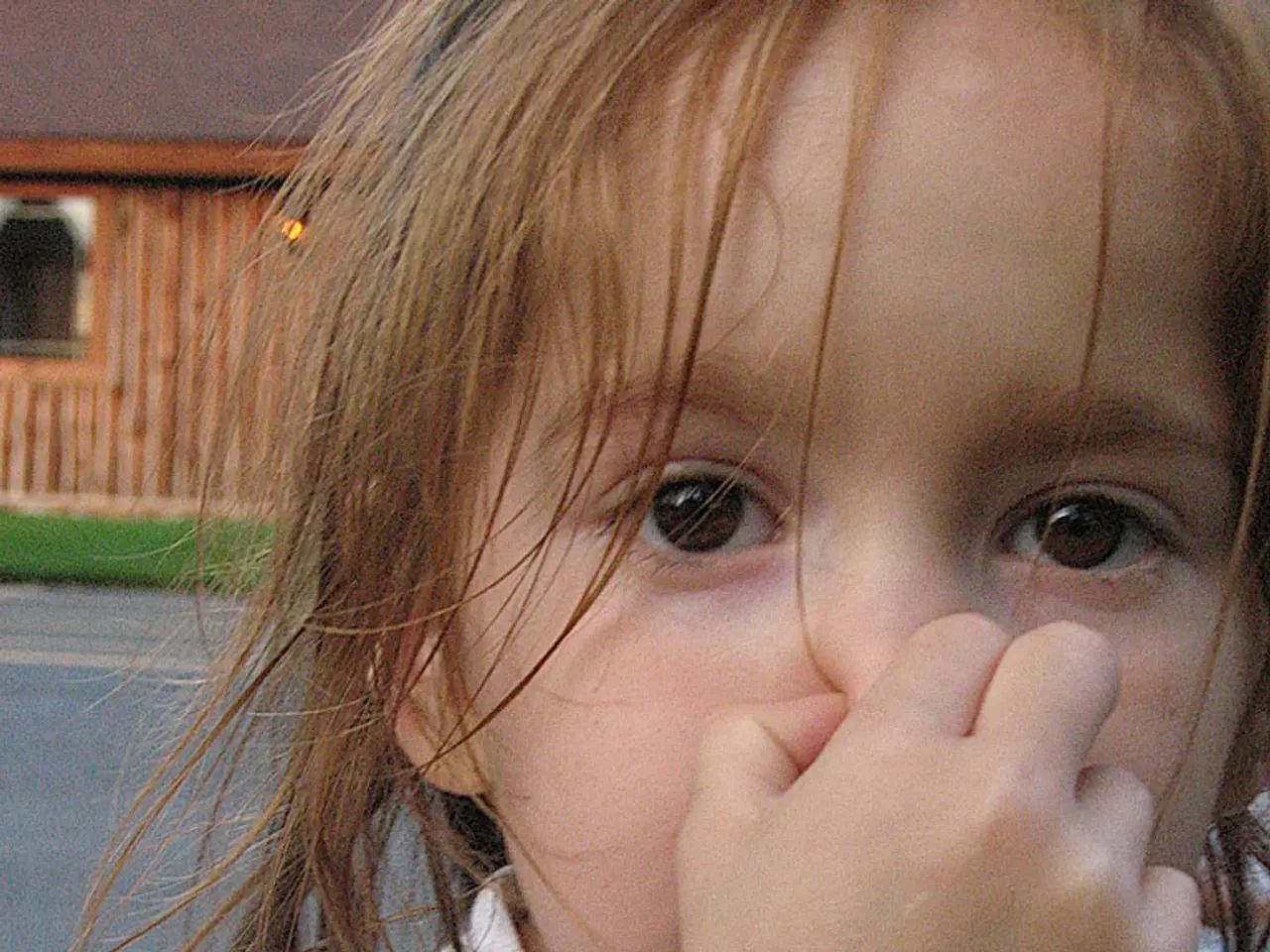Nosebleeds: Causes and Remedies
Nosebleeds, or epistaxis, are a common occurrence that affect a significant portion of the population. According to recent estimates, approximately 60% of people have experienced a nosebleed at some point. While most nosebleeds are minor and stop on their own after a few minutes, there are several causes and prevention methods to consider.
Common triggers for nosebleeds, particularly those linked to blowing the nose, include dry nasal passages, nasal irritation and trauma, allergies and infections, medications, and underlying conditions. Dry indoor air, often in winter or from heating systems, can dry out and crack nasal membranes, making blood vessels more fragile and prone to bleeding. Forceful nose blowing, frequent nose picking, or minor injuries can damage the delicate blood vessels inside the nose, leading to bleeding. Allergies causing constant rubbing or inflammation also increase the risk of nosebleeds. Respiratory allergies and sinus infections cause inflammation and irritation of nasal passages, contributing to bleeding.
Blood thinners, such as aspirin, warfarin, and certain nasal sprays, may increase bleeding risk by making vessels more fragile or causing dryness. Underlying conditions, such as high blood pressure, blood clotting disorders, or structural nasal abnormalities, can predispose individuals to recurrent nosebleeds. Other causes of nosebleeds include nasal, sinus, face, or eye surgery, foreign bodies in the nose, nasal polyps or tumors, inflammatory conditions, exposure to toxic chemicals, snorting illegal drugs, especially cocaine, being on chronic oxygen via nasal cannula, and some hereditary or genetic conditions.
To prevent nosebleeds, it is recommended to keep nasal passages moist by using humidifiers and saline nasal sprays. Avoiding nasal irritants, such as smoke, chemicals, and strong odors, can help prevent dryness and cracking. Managing allergies and infections with proper treatment reduces inflammation and nose rubbing, decreasing bleeding risk.
In case of a nosebleed, the initial treatment is to apply firm, sustained pressure on the lower part of the nose for at least 10 minutes to control anterior nosebleeds. For frequent or severe bleeds, medical interventions such as nasal cauterization to seal fragile vessels or nasal packing for posterior bleeds may be necessary. Consult a healthcare provider about blood thinners and nasal sprays if nosebleeds are frequent.
While only around 10% of nosebleed cases require medical attention, it is essential to seek medical attention if a nosebleed does not stop within 20 minutes of applying pressure, is long-lasting, heavy, or recurrent, is accompanied by dizziness or weakness, keeps a person from their usual activities, or is accompanied by any of the following symptoms: pain or tenderness around the eyes, stuffy nose that continues to get worse and will not clear, mucus that drips in the back of the throat, change in the appearance of the nose or surrounding area, pus in the nose, chronic watery eyes, change in vision, enlarged lymph nodes in the neck, pain or pressure in the ears, hearing loss, numbness in the face, loosening, numbness, or pain in the teeth, difficulty opening the mouth, headache, or repetitive nosebleeds, especially when they only involve one nostril, can be a sign of nasal deformities or tumors.
In summary, nosebleeds due to blowing the nose commonly result from dry, irritated, or inflamed nasal lining that easily ruptures blood vessels. Treatment focuses on stopping the bleeding, preventing dryness, managing underlying causes like allergies, and in recurrent cases, medical procedures to seal vulnerable vessels. It is always best to consult a healthcare provider for severe or repetitive nosebleeds, especially when accompanied by additional symptoms.
- Predictive analysis may help identify factors that increase the likelihood of experiencing nosebleeds, particularly among those who have a history of nosebleeds or are susceptible to certain medical conditions.
- Individuals with asthma, NSCLC, depression, diabetes, arthritis, hepatitis, bipolar disorder, or psoriatic arthritis may have a higher risk of nosebleeds due to their underlying medical conditions or medications.
- In the realm of health and wellness, maintaining fitness and exercise, skin care, and proper nutrition can contribute to overall general health, potentially reducing the risk of nosebleeds and other nasal disorders.
- Science continues to uncover new insights about the relationship between various medical conditions and nosebleeds, opening up promising avenues for preventative treatments and management strategies.
- Type 1 and type 2 diabetes, COPD, and other nasal disorders may lead to dry nasal passages and inflammation, which can predispose individuals to nosebleeds, requiring more attention to their health-and-wellness lifestyle.
- While managing allergies, infections, and medications addresses common triggers for nosebleeds, healthcare providers may also prescribe AQ (atmosphere-generating) humidifiers to keep nasal passages moist and prevent bleeding.
- In instances where nosebleeds do not stop after applying pressure, consulting a healthcare provider about potentially adjusting or discontinuing blood thinners and nasal sprays is prudent.
- For people who have undergone nasal, sinus, face, or eye surgery, it is crucial to remain vigilant for potential complications like nosebleeds and discuss them with their healthcare providers.
- An awareness of the underlying causes and preventative measures enables people to reduce the risk of nosebleeds and address them promptly when they occur, ensuring effective treatment and overall wellbeing.




